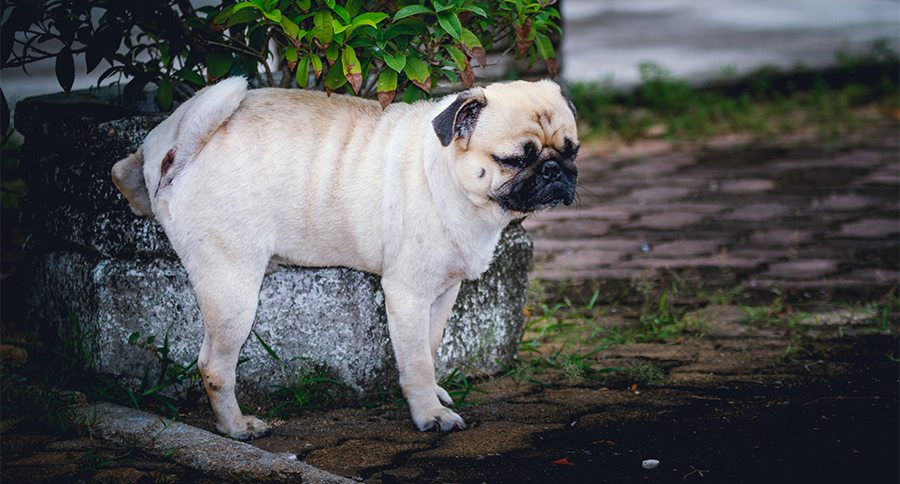One of the most common reasons for urinary complications in the veterinary world are urinary crystals. But it's not just important to note that crystals are present. Microscopic analysis determines which crystals are in the urine, and that can alter the plan of action for treatment and prevention.
Some common causes of crystals include improper diet, toxicity, dehydration, and underlying disease. Treatment might include antibiotics, fluid therapy, medication, or more aggressive means such as urinary catheters or surgery. If your cat or dog is experiencing frequent urination or is having trouble urinating, it's time for a trip to the vet to get to the bottom of what's going on.
Why Urinary Crystals Matter
According to PetMD, there are many different causes behind crystal formation. Some potential causes include your pet's diet, genetics, kidney function, and even the urine concentration of water. Underlying issues like health conditions can also contribute to urinary stones and crystal development. If your pet's urine pH is too acidic or alkaline, that imbalance between acidic urine and alkaline urine can also cause crystals to form.
The problem is, urine crystals are painful. Clinical signs of urinary crystals include trouble urinating, blood in the urine, and lethargy.
The presence of crystals doesn't always mean that your pet has bladder stones or kidney stones, but sometimes it can mean that your pet is at an increased risk for stone formation and other issues. Common types of urinary crystals can sometimes indicate that your pet has a bladder infection, urinary tract infection (UTI) or kidney infection.
Regardless, it's important to get to the bottom of what's causing the crystals to form. During your pet's workup, your vet may take a urine sample, perform x-rays, perform a urinalysis, run blood work, and more to identify just what's causing your pet's issues.
By analyzing the different types of crystals present, your vet may be able to determine a treatment plan that's appropriate for your pet.
Struvites
The most common urinary crystal, struvites look like rectangular glass prisms under the microscope. Bacterial infections in the urinary tract can accumulate enough to cause struvite crystals. An overload of struvites commonly results in bladder stones.
Amorphous
Microscopic findings with no definitive shape but clearly harboring traits akin to crystals are classified as amorphous. These are typically comprised of either urates or phosphates.
Calcium Oxalate
These crystals can be classified as either monohydrate or dihydrate. They typically resemble a box with an X in the center. Others can resemble clear little seeds as well as picket fences under the lens. Elevated levels of calcium or antifreeze toxicity can cause these crystals.
Bilirubin
These crystals appear as clumps of sharp fuzz under magnification. Bilirubin is important in the breakdown of waste products in the body's blood. It is found in both bile and urine, adding to their yellow hue.
Disorders that note yellowing of the skin—such as bruising and jaundice—are the result of bilirubin build-up, sometimes in natural healing levels and other times in concerning amounts. Excess levels can be indicative of a liver disease.
Cystine
A hexagonal shape distinguishes these crystals from others. They are indicative of renal complications that eventually leads to stones.
Ammonium Biurate
These crystals appear as thorny apples through the microscope. They typically indicate stones are present.
Treating Urinary Crystals
Your vet will recommend a treatment plan appropriate for your pet's specific types of crystals. Some treatment options include surgery, prescription diets and diet changes, increased water intake for your pet, and follow-up appointments to monitor the condition.
Your Pet's Risk Factors
Many healthy dogs and cats go all their lives without developing urinary crystals, but some breeds are more prone to this problem than others.
PetMD states that many breeds are prone to developing urinary crystals:
- Miniature Schnauzers
- Yorkshire Terriers
- Lhasa Apsos
- Miniature Poodles
- Dachshunds
- English Bulldogs
- Mastiffs
- Newfoundlands
- Dalmatians
- Cavalier King Charles Spaniels
If you own one of these breeds, you might want to talk to your vet to discuss preventative measures you can take, like putting your dog on a special diet of dog food that can help to prevent the type of crystals the dog is prone to.
If your dog or cat is showing changes in frequency of amounts of urination or drinking, or incontinence, it is best to take him or her to a veterinarian. Male cats straining to urinate should be taken to the vet immediately as this is an emergency situation.
Veterinary medicine has a number of tactics for tackling urinary crystals, so be sure to speak to your veterinarian about treatment options. Note that some breeds are more predisposed to certain crystals than others.
Have you heard of other urinary crystals in dogs and cats? Share your thoughts in the comments below.
WATCH NOW: Pets Lead to Good Health




